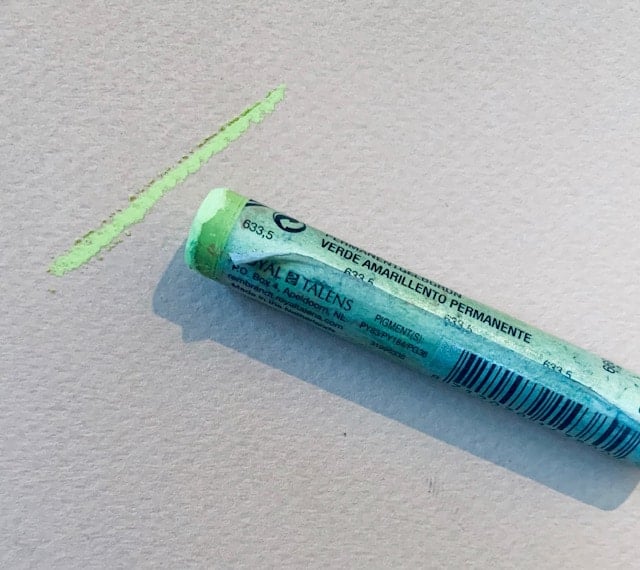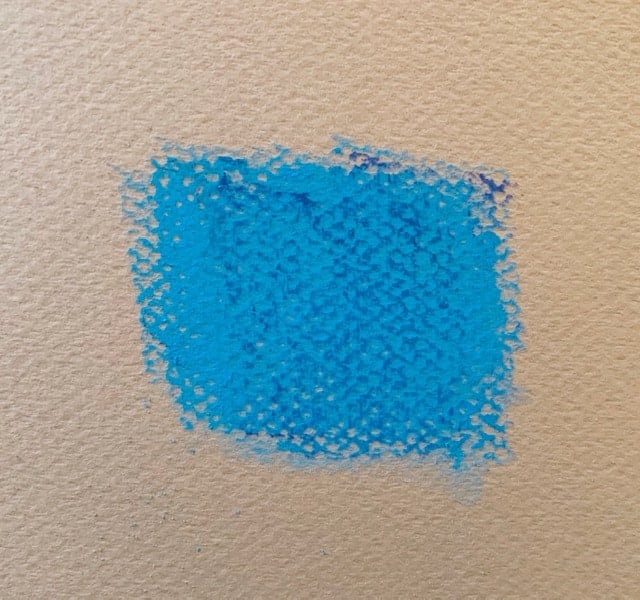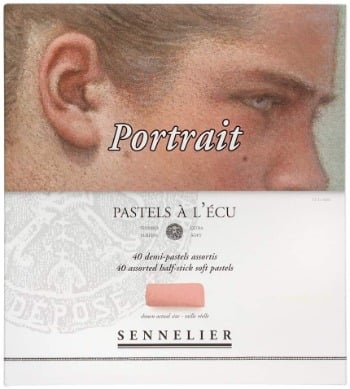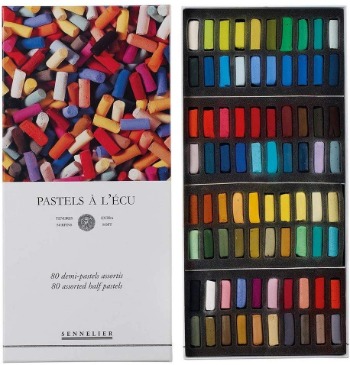I absolutely love soft pastel drawing, and have been hooked ever since I started using them! I could not recommend the medium more. There is a greater sense of immediacy with soft pastels than compared to painting with oils or acrylics.
I say this because one can create a quick sketch much quicker with soft pastels than with paint. Which is why, I find soft pastels drawing really great for creating brief portrait drawings or even taking with you when traveling.
However, enough about how great drawing with soft pastels is and here are some great soft pastels drawing techniques you can use!
Creating lines with the edge of a pastel

When creating a line use the edge of the end of a pastel stick. Hold it upright like you would a pencil. It is a great way to capture a clean line in your soft pastel drawing. You can vary the types of lines you do by how much pressure you apply to the stick. The more pressure you place on the stick the `thicker the line will be. A light touch will create feather light lines. You can add a variation of them both in your drawing.
Using the side of soft pastels for drawing

Using the side of a pastel is a great way to create a variety of marks in your soft pastel drawing. I like to break my pastel stick in half because the length of a full stick is too long unless you are working on a very large drawing. Using the side of a pastel can be an effective way to put down a lot of color at once as well as ‘block in’ areas. It is a wonderful way to create beautiful wide strokes. Try it out!
Hatching and Cross Hatching

You can create hatched marks by drawing clean lines on top of some color with the edge of a pastel. If you want to create a cross hatched texture then draw diagonal lines like in the example above. This technique can help you ‘test’ out some colors without fully committing. Also, doing this can help mix colors without blending. And placing orange on top of blue like in the image above is a way to create a muted blue.
Blending soft pastels drawing techniques

One of the most unique aspects of soft pastels is that you are able to blend the colors together. You can use the blending technique to either mix colors together or create a variety of edges. You can use a variety of tools for blending – either your finger, paper towel, a piece of cloth or a cotton ball!
Blending can create incredibly soft effects. Just be sure not to use it too much. If everything is soft then your drawing will lose all character. Rather, you want to vary the texture in your drawing.
For help with color mixing principals and techniques grab my FREE Color Mixing Guide if you haven’t already!
Scumbling tips for drawing with pastels

A great way of getting some textural effects with vibrant color is to lightly drag some pastel across a layer of already fixed color. The effect this creates can be very visually stimulating. Just know that it is best to use the softest of the softest pastels for this technique.
Layering soft pastels

Layering is the only way you will be able to mix colors with your soft pastel drawing! It is essential if you want to create specific and rich colors in your. You will lay down a base color and lay down a color on top of that, and depending on what color you are trying to achieve you can lay down more colors. You can either leave the colors as they are, or you can blend them together on your paper to create a softened effect. Just be sure to lay down colors lightly. If you press too hard you will not be able to layer many colors.
Recommended Materials
Below are some recommended soft pastels. For a thorough overview of the best materials for starting in Soft pastels check out Soft Pastel Drawing for Beginners.
Sennelier Soft Pastels – Half Stick set of 80
I personally love Sennelier Soft Pastels. They are one of the softest buttery pastels I have ever experienced and are very fun to use. You can create beautiful drawings with the brilliant colors these soft pastels come in. This particular set comes in half sticks with a range of 80 different colors.
Sennelier Soft Pastels – Portrait Colors – Set of 40

If you are a portrait or figure artist, this is the pastel set for you! It comes in a set of 40 different colors
Want to remember this? Save these 6 Soft Pastel Drawing Techniques to your favorite Pinterest board!







7 thoughts on “6 Great How to Use Soft Pastels Drawing Techniques”
Thank you. Loved it
Glad to hear that Kathy!
I am starting to use soft pastels and your tips have been very helpful. Thank you for sharing your knowledge.
Very glad these tips have been helpful, thank you for sharing!
WOW
Good tips for a beginner.
Thank you 🙏
Thank you! Glad it is helpful 🙂